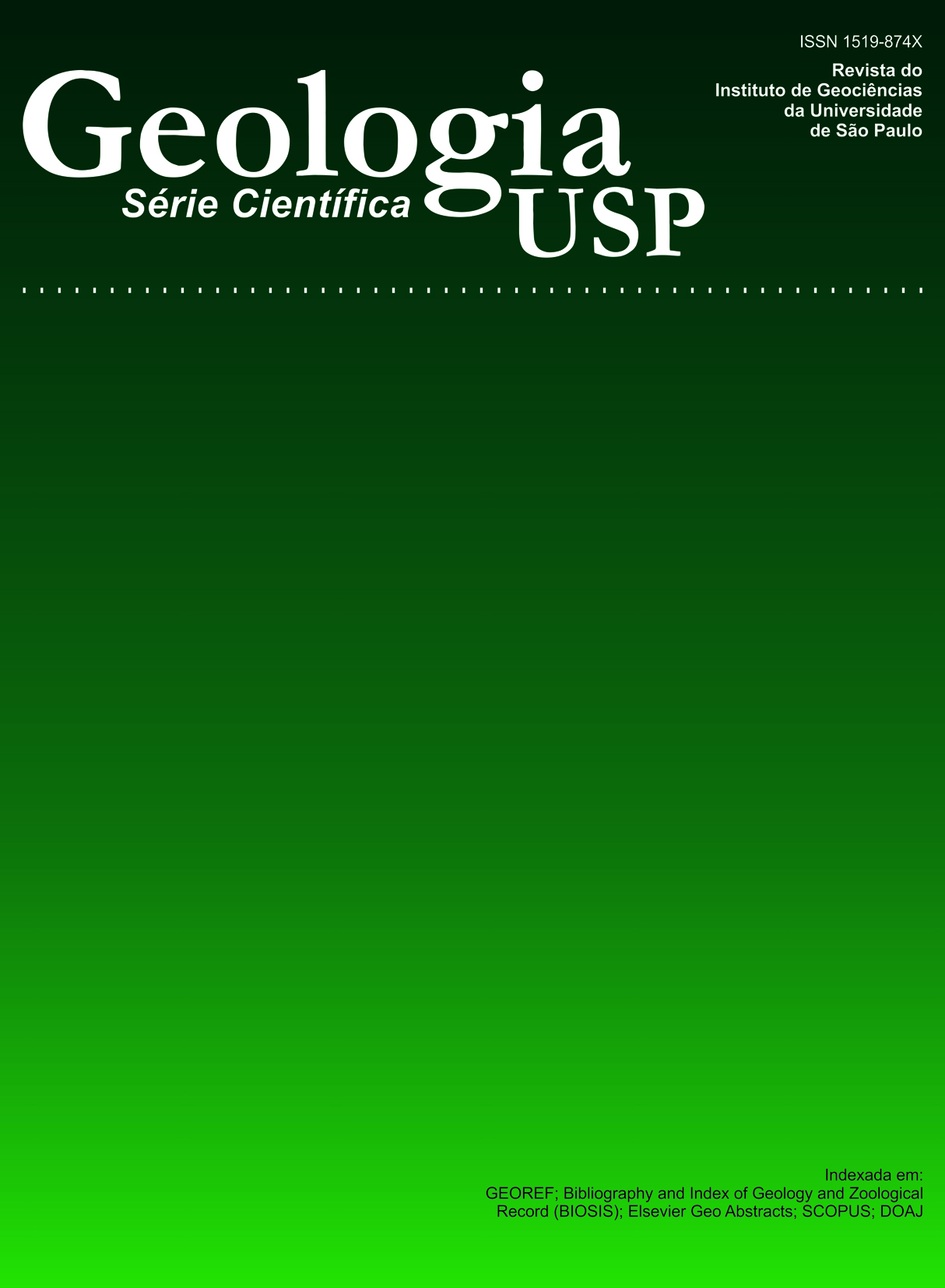The deposition of quaternaty tufas in Mato Grosso do Sul state: proposal for the definition of the Serra da Bodoquena formation
DOI:
https://doi.org/10.5327/Z1519-874x2009000300003Keywords:
Tufa, Limestone, Karst, Serra da Bodoquena Formation, QuaternaryAbstract
Quaternary tufa deposits occur widely in the Serra da Bodoquena (state of Mato Grosso do Sul, Brazil), associated with the karst system that has developed on carbonate rocks of the Corumbá Group. The deposition of tufa is favored in the Serra da Bodoquena due to the predominance of autogenic waters, which allow for groundwater to be enriched in calcium carbonate. By means of numerous springs, this groundwater supplies the rivers of the area where tufas are deposited. These rivers have small quantities of siliciclastic sediment, making the water very clear, which favors biological activity and, as a result, the precipitation of carbonate. The lithological characteristics, the existence of clear and abrupt lines of contact and the easy mapping of the tufas make it possible to create a new unit, here named the Serra da Bodoquena Formation. Deposition in a distinct river basin and karst system justify separation from the Xaraiés Formation, even if their lithologies are partly similar. The Serra da Bodoquena Formation is discontinuous due to the nature of deposits, formed in association with the surface drainage network. The individual outcropping areas never interconnected with each other or with the Xaraiés Formation in the Corumbá region. The new unit was divided into two members in order to represent catchment and waterfall deposits and micrite deposits named, respectively, Rio Formoso and Fazenda São Geraldo members. The older tufa deposits indicate greater deposition from 6530 cal years BP until 2700 cal years BP, when the decline began reaching the present fate. This more intensive deposition represents a period of more humid climate, which changed at around 2700 cal years BP when similar conditions to those found at present became established. The active deposition of tufas in the Rio Formoso Member is still significant, although limited to the courses of perennial or intermittent drainage channels.Downloads
Download data is not yet available.
Downloads
Published
2009-10-01
Issue
Section
Articles
License
Authors who publish in this journal shall comply with the following terms:
- Authors keep their copyright and grant to Geologia USP: Série Científica the right of first publication, with the paper under the Creative Commons BY-NC-SA license (summary of the license: https://creativecommons.org/licenses/by-nc-sa/4.0 | full text of the license: https://creativecommons.org/licenses/by-nc-sa/4.0/legalcode) that allows the non-commercial sharing of the paper and granting the proper copyrights of the first publication in this journal.
- Authors are authorized to take additional contracts separately, for non-exclusive distribution of the version of the paper published in this journal (publish in institutional repository or as a book chapter), granting the proper copyrights of first publication in this journal.
- Authors are allowed and encouraged to publish and distribute their paper online (in institutional repositories or their personal page) at any point before or during the editorial process, since this can generate productive changes as well as increase the impact and citation of the published paper (See The effect of Open Access and downloads on citation impact).
How to Cite
Sallun Filho, W., Karmann, I., Boggiani, P. C., Petri, S., Cristalli, P. de S., & Utida, G. (2009). The deposition of quaternaty tufas in Mato Grosso do Sul state: proposal for the definition of the Serra da Bodoquena formation . Geologia USP. Série Científica, 9(3), 47-60. https://doi.org/10.5327/Z1519-874x2009000300003





